As of the 11th March, Gas and Electricity Year Ahead Wholesale costs show slight increases when compared to last month’s report, but are still very low. The coronavirus has spread further afield, reducing Oil demand forecasts. OPEC’s meeting in March agreed production cuts to stimulate the price, requiring Russia to do the same. However, Russia, who are not a member of OPEC, is less keen. They anticipate that the US would increase output and take a greater market share. In response, Saudi Arabia is increasing production and prices have fallen from $55 a barrel to $35. Some see this as an attempt force the closure of US Oil companies, who have high levels of debt to repay.
Gas Wholesale costs are comparable to 2016, as illustrated by our graph. There were a large number of LNG deliveries in February and the lowest use of Gas for generation since 2015 at just 28%. As with Oil, global LNG demand is down, meaning lower prices and greater availability.
Electricity Wholesale prices are also at 2016 levels. For the first time, the month’s data showed Wind provided more generation than Gas, at 29%. As expected through the winter, Coal remained an important part of our fuel mix at 4% in February. Coal power stations will close by 2024 if not before to help meet carbon reduction targets.
The Met Office forecast for the next month suggests unsettled conditions, with temperatures generally at seasonal average levels but with some overnight frosts. The Renewables contribution will likely be lower than recent months with lighter winds. This will place an additional burden on prices as more expensive forms of generation will be required.
Wholesale prices are extremely competitive, but it should be remembered that the Wholesale element makes up in the region of just 40% of the total cost of an Electricity bill. Gas is roughly 55%.
The influence of higher third-party costs is increasingly noticeable in Electricity contracts. These include, Transportation, Distribution and government policy levies. Over the next few years, the way some of these charges are calculated will change, under the Targeted Charging Review, although the details are not yet available. April 2021 is due to see changes to Transportation and April 2022, Distribution. Energy suppliers may choose to review existing contracts.
It is advisable to request supplier offers for all 2020 start contracts, for your consideration. Longer term contracts do currently have a premium, but are still showing value. As Wholesale prices are so low and with global uncertainty as to the impact of the coronavirus, we are seeing exaggerated daily increases and for now, followed by falls.
Please contact us to discuss options or to get a latest update.
On the 11th March, the Gas Year Ahead Wholesale cost was 30.89 (p/th), from 29.46 (p/th) in last month’s report and 34% lower than 2019. February was another month of high LNG deliveries due to a lower Asian price and a reduced global demand. There were some delays to shipments due to the high winds, which did require us to use more Storage. Although Storage levels are down, this is expected, with opportunities to top up during periods of lower demand. Another record month for Wind reduced the need for Gas generation, which fell to just 28%, the lowest since 2015.
The dramatic fall in the Oil price has impacted on Gas, due to some contractual links. This is another impact of the coronavirus.
Let us know if you would like us to research your options for 12, 24 and 36 month contracts.
On the 11th March, the Electricity Year Ahead Wholesale cost was 39.43 (£/MWh), from 38.26 (£/MWh) in last month’s report and 22% lower than 2019.
Wind made another record monthly contribution to generation, at 29%. So far in March, Wind is down at 24%. Although still very high this means a greater use of more expensive fuels such as Gas, which is up to 37% from 28% in February. The weather forecast would indicate this to continue through the month.
Coal is still an important but expensive source of supply, meeting additional demand or shortfalls in other areas, such as Renewables, before the remaining power stations close by 2024. In February, it contributed 4%, less than January.
Third Party Charges continue to increase regardless of how the Wholesale element changes, which has been very evident as we look to secure contracts for customers. These charges typically pay for the mechanisms, securing generation at peak periods. The Targeted Charging Review will change how some of these are calculated, from April 2021 and 2022.
Let us know if you would like us to research your options for 12, 24 and 36 month contracts.
"Indigo Swan were professional but with a personable approach. Their market knowledge allowed me to enter new contracts with confidence, this was something I was unable to do with my previous broker."
Joanna Thornton, Estate Manager
"The experience behind the Indigo Swan team, their passion and integrity were all important to us. They clearly understood the market and could provide the best advice. "
Phil Riseborough, Head of Facilities
"We’ve worked with other energy consultants, but with Indigo Swan we get real integrity and service that is way beyond our expectations. We have already saved over £120k."
Jason Wakefield, Procurement Manager
| Cookie | Duration | Description |
|---|---|---|
| TawkConnectionTime | session | Tawk.to, a live chat functionality, sets this cookie. For improved service, this cookie helps remember users so that previous chats can be linked together. |
| Cookie | Duration | Description |
|---|---|---|
| SRM_B | 1 year 24 days | Used by Microsoft Advertising as a unique ID for visitors. |
| Cookie | Duration | Description |
|---|---|---|
| CONSENT | 2 years | YouTube sets this cookie via embedded youtube-videos and registers anonymous statistical data. |
| MR | 7 days | This cookie, set by Bing, is used to collect user information for analytics purposes. |
| _ga | 2 years | The _ga cookie, installed by Google Analytics, calculates visitor, session and campaign data and also keeps track of site usage for the site's analytics report. The cookie stores information anonymously and assigns a randomly generated number to recognize unique visitors. |
| _gat_gtag_UA_12371872_1 | 1 minute | Set by Google to distinguish users. |
| _ga_* | 1 year 1 month 4 days | Google Analytics sets this cookie to store and count page views. |
| _gcl_au | 3 months | Provided by Google Tag Manager to experiment advertisement efficiency of websites using their services. |
| _gid | 1 day | Installed by Google Analytics, _gid cookie stores information on how visitors use a website, while also creating an analytics report of the website's performance. Some of the data that are collected include the number of visitors, their source, and the pages they visit anonymously. |
| Cookie | Duration | Description |
|---|---|---|
| ANONCHK | 10 minutes | The ANONCHK cookie, set by Bing, is used to store a user's session ID and also verify the clicks from ads on the Bing search engine. The cookie helps in reporting and personalization as well. |
| MUID | 1 year 24 days | Bing sets this cookie to recognize unique web browsers visiting Microsoft sites. This cookie is used for advertising, site analytics, and other operations. |
| test_cookie | 15 minutes | The test_cookie is set by doubleclick.net and is used to determine if the user's browser supports cookies. |
| VISITOR_INFO1_LIVE | 5 months 27 days | A cookie set by YouTube to measure bandwidth that determines whether the user gets the new or old player interface. |
| YSC | session | YSC cookie is set by Youtube and is used to track the views of embedded videos on Youtube pages. |
| yt-remote-connected-devices | never | YouTube sets this cookie to store the video preferences of the user using embedded YouTube video. |
| yt-remote-device-id | never | YouTube sets this cookie to store the video preferences of the user using embedded YouTube video. |
| yt.innertube::nextId | never | This cookie, set by YouTube, registers a unique ID to store data on what videos from YouTube the user has seen. |
| yt.innertube::requests | never | This cookie, set by YouTube, registers a unique ID to store data on what videos from YouTube the user has seen. |
| Cookie | Duration | Description |
|---|---|---|
| CLID | 1 year | No description |
| SM | session | No description available. |
| twk_idm_key | session | No description |
| _clck | 1 year | No description |
| _clsk | 1 day | No description |
